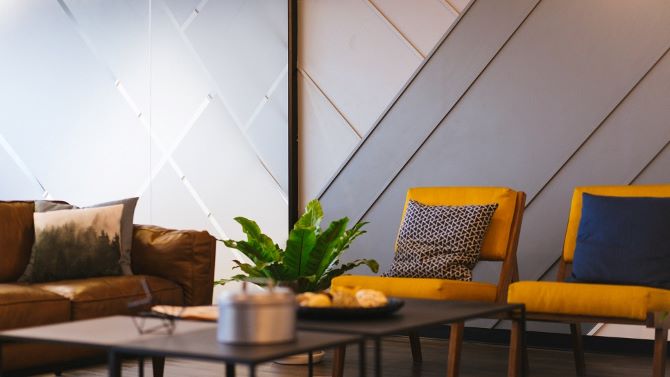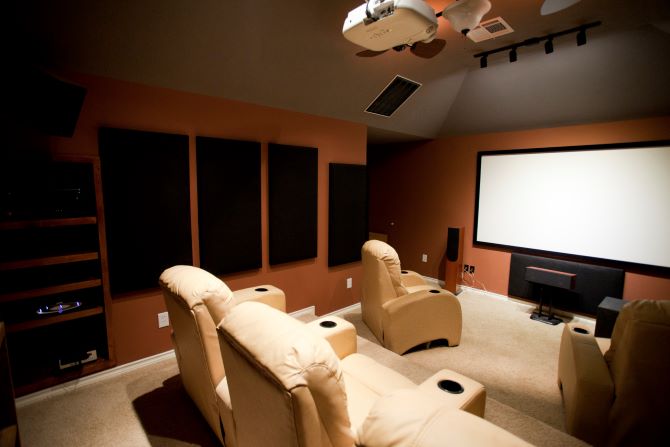Hard music from the neighbours, traffic rushing by or footsteps on a higher floor or in the adjoining stairwell: noise pollution disturbs your living comfort. Sound insulation offers a solution here. It prevents sound vibrations from reaching your home and improves the acoustics in your house. Read all about the possibilities and costs of sound insulation in this article.
What does sound insulation cost?
The cost of sound insulation depends on the measures you take to stop noise pollution. For example, you can insulate the ceiling, floor or walls. Total prices will depend, among other things, on the insulation material you choose, whether or not you hire an insulation company and the number of m2 you insulate. The table below gives an indication of the cost per m2, including installation by a specialist.
| Isolation measure | Project | Average cost per m2 |
|---|---|---|
| Floor insulation | Roofed ceiling | £ 40 – £ 60 |
| Floor insulation | Floating screed | £ 50 – £ £ 70 |
| Floor insulation | Floor insulation | £ 35 – £ 55 |
| Gable insulation | Front wall | £ 60 – £ 90 |

When insulating the walls due to noise pollution, cavity wall insulation is also a good option. Does your home not yet have cavity wall insulation? Or is the current insulation in your cavity wall insufficient or outdated? On average, the cost of post-insulating a cavity wall is between £17 and £25 per m2, depending on the insulation material used. Want to know more? Read all about this insulation measure in our cavity wall insulation prices article.
Find the best specialist for your project and get free quotations.
Start
What is sound insulation?
Sound insulation is the insulation of your home to reduce and prevent noise nuisance. The insulation prevents sound from being transmitted through vibrations. Depending on the cause of noise nuisance, there are several ways to apply this insulation.
What is the cause of noise nuisance?
There are several reasons to apply noise insulation. The first reason is noise pollution from outside: think of the neighbours who have the TV on loudly, a noisy stairwell or a busy street with a lot of traffic next to your house. Two forms of noise nuisance can be distinguished here:
- Airborne noise: As the word suggests, these are sounds transmitted through vibrations in the air. These sound vibrations vibrate through into walls and/or floors, causing airborne sound to seep into other rooms in the house. Examples include TV sounds, people talking or traffic noise.
- Contact sound: Unlike airborne sounds, impact sounds travel via the object they come into contact with. Think, for example, of sounds created by people’s footsteps on the stairs or on a higher floor, drilling holes in walls or moving furniture.
In addition to being bothered by sounds from outside, reverberation or reverberation of sounds indoors can also be perceived as disturbing. Acoustic insulation can help minimise reverberation from TV sounds or chatter, for example, and thus improve indoor acoustics.
How do you insulate against noise?
As soon as you know which noise problem you want to insulate against, you can apply the most appropriate method. Below are the ways in which an insulation specialist, or you yourself, can insulate your home.
Isolating against airborne noise
To combat nuisance from TVs, loud music or traffic noise, checking for seams and cracks is a good first step. Especially in older houses, sealing these can make a big difference.
In addition, you can also insulate adjacent walls or ceilings. A suspended ceiling with insulating material creates an extra barrier to absorb unwanted noise vibrations.
A cavity wall insulation or installing a partition wall or pre-wall are also good solutions. With a separation wall, a frame is placed in front of the wall. This contains the insulation material, after which it can be finished with plasterboard. The insulation in front of the wall then absorbs sound coming through the outer wall.
Insulating against impact sound
Ideally, you should insulate the ceiling, walls and floor to stop impact sounds. This is because the sound vibrations travel through one surface to the other as they interact. Because this is not always possible or desired, you often choose to insulate only the surface adjacent to the sound. This way, you partially attenuate impact sound and also reduce airborne noise.
Do you choose to insulate the ceiling? A commonly chosen option is to create a suspended ceiling between which you provide a sound barrier with insulating material. Walls can be insulated just like airborne sound insulation using a false wall.
Do you opt for floor insulation? In a house with hollow wooden floorboards, the floors can be filled with insulating material to absorb impact sounds. A floating screed is also an option. This is because this floor has no contact with the walls, ceiling or original floor.
With a floating screed, insulation material is applied to the current floor and covered with a new floor. The insulation material captures the sound vibrations caused by impact sound. Edge strips prevent the new floor surface from coming into contact with the walls and thus the ceiling. So impact sound can no longer travel that way either.
Insulating against acoustic problems
To get rid of reverberation in your home, adding furniture or hanging curtains in front of the windows helps. This is because objects absorb sound vibrations. There are also different types of acoustic insulation available.
Famous are undoubtedly the foam boards with studs that are often found in music studios, for example. In your living room, you can place sheets of insulating material behind objects on the wall. These insulation boards absorb the reflected sound. Here, the thicker the insulation board, the better the acoustic insulation will be.
Tension ceilings and tension walls also exist for the ceiling and walls respectively. These finishes not only look stylish but also help with acoustic insulation. This is because they absorb sound vibrations. Acoustic panels on the ceiling or walls are especially common in offices with open spaces.

What materials do you use for sound insulation?
There are many materials on the market that are suitable for sound insulation. You have materials that have both heat-insulating and sound-insulating characteristics, as well as materials that are purely sound-absorbing.
Mineral wool (glass wool and rock wool) has an open structure and is therefore very suitable as sound insulation. Both insulation materials are therefore often used to provide sound insulation in addition to thermal insulation. Besides glass wool and rock wool, EPS and PIR also have sound-insulating properties.
A common sound-absorbing material is foam. For example, both flake foam and bubble foam are often used. Flake foam allows virtually no sound vibrations to pass through. Bubble foam is often used in (music) studios because it absorbs reverberation well. However, this versatile foam is also great for absorbing reverberation in, for example, the living room.
Compare insulation materials on their properties. Also consider the shape you need. For pre-walls and suspended ceilings, blankets or boards are a handy choice. Are you planning to fill the wooden floor? Materials such as glass wool and rock wool are also available as flakes. Choose the material that best suits your project. In doubt? Ask a specialist for advice. They will be happy to help you.
Find the best specialist for your project and get free quotes.
Start